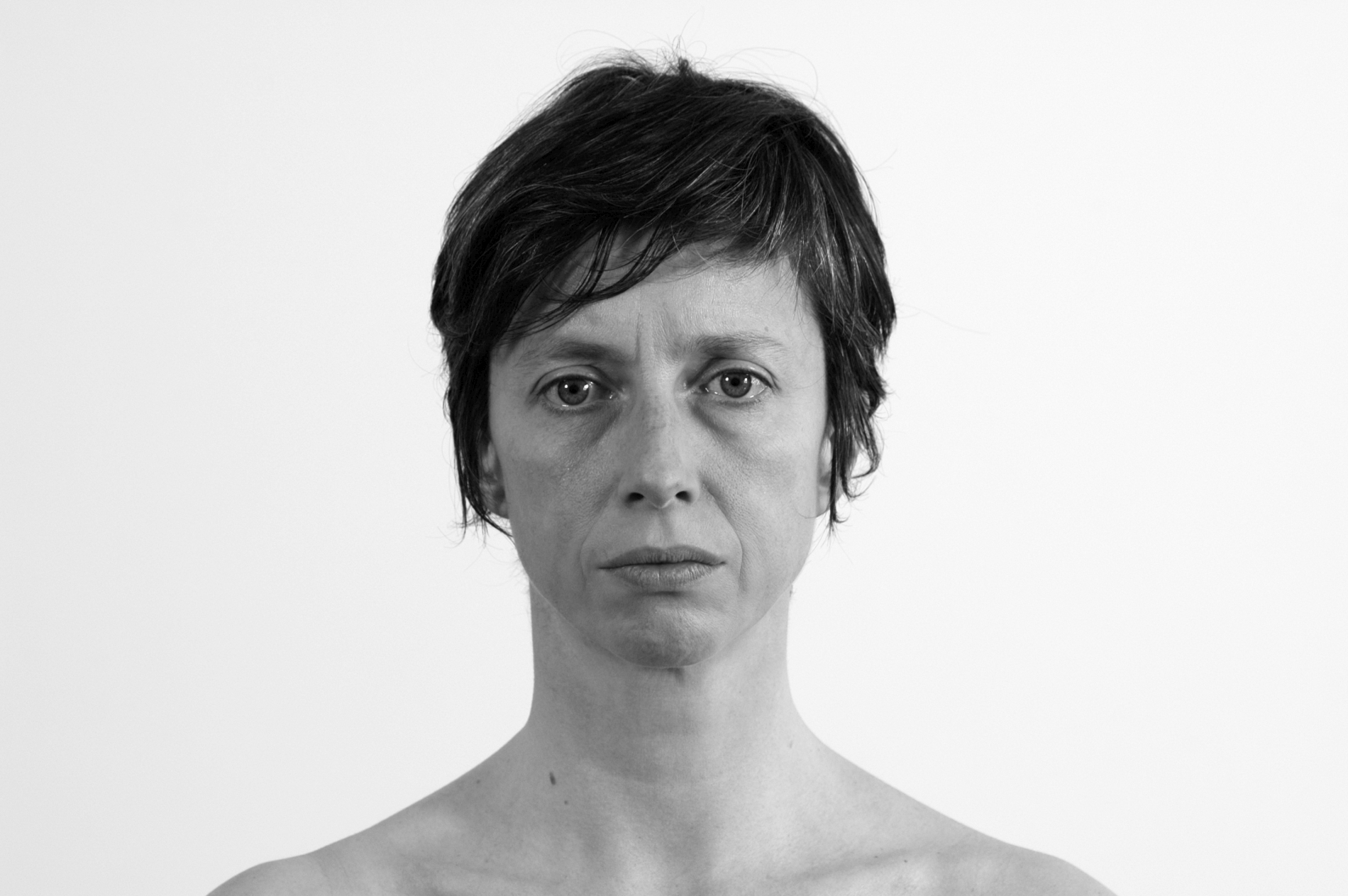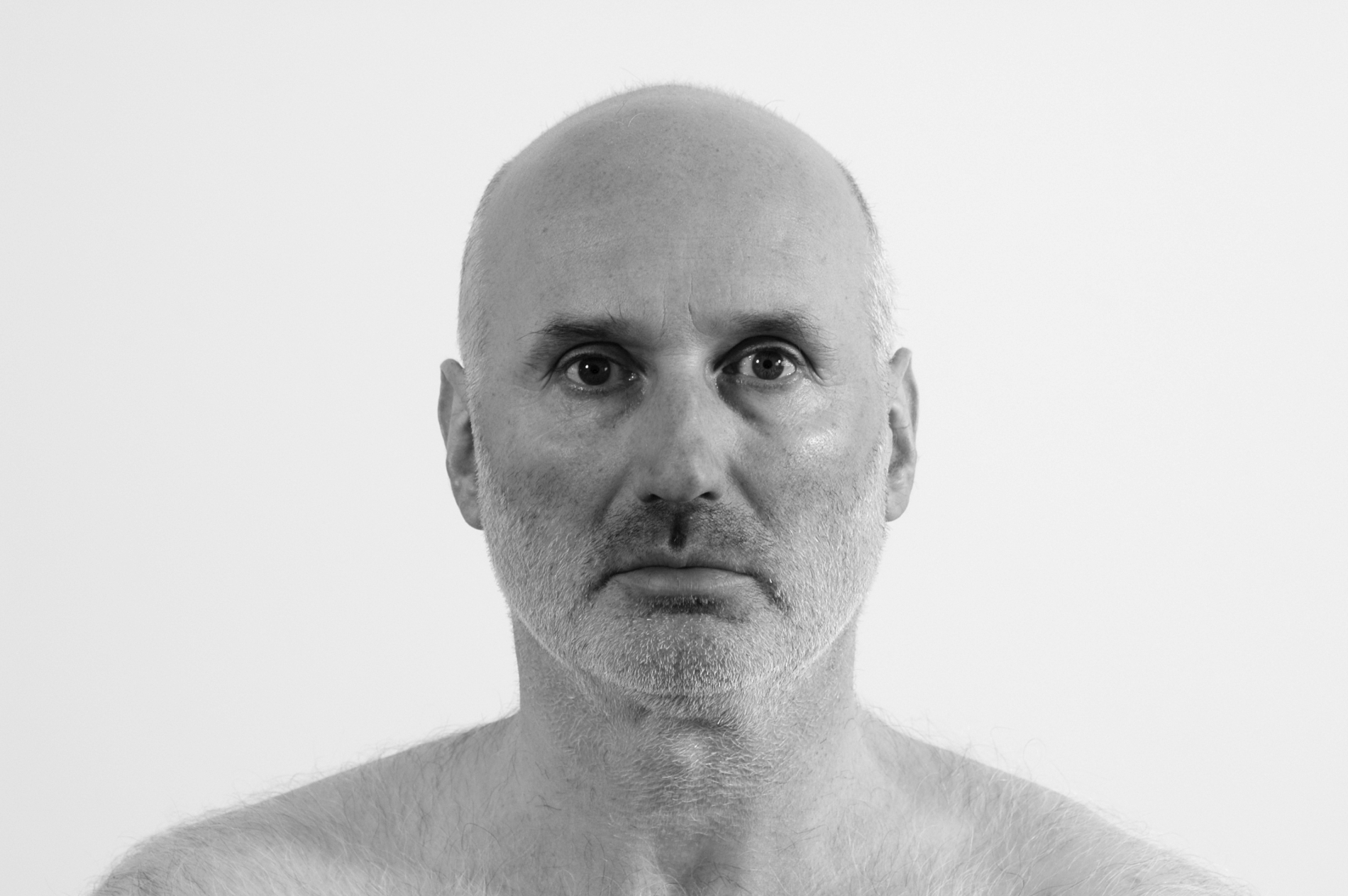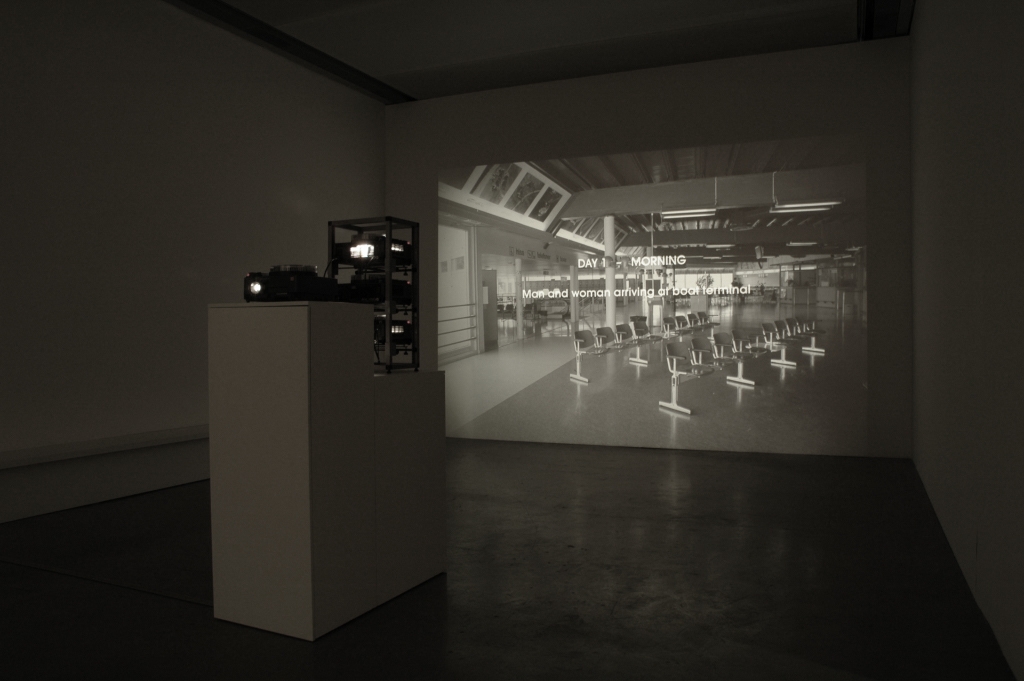Displacement, 2009

















The installation consists of slide projections and a soundtrack that can be listened to via headphones. Large black-and-white images are projected onto opposite walls. On one side, giant, frontal portraits of a man and a woman alternate with the white, illuminated text, ‘every story is a travel story’. The portraits appear and disappear in slow fades, which largely determine the lighting and atmosphere of the overall space. A kind of ‘travelogue’ plays out on the other side. The landscapes and interiors aren’t exactly exotic, but you can’t immediately place them either. Each image is overlaid with a text such as ‘Day 6 – Early afternoon – Man and woman visiting excavation site with Mr. B’. For the most part, there are no people to be seen in the photographs, yet almost all the images contain traces of a human presence: infrastructure, windmills, radars, bunkers, industrial installations, art, archaeological remains, and so forth. No use is made of unusual viewpoints or perspectives: the images present the intriguing, expansive and desolate setting as if viewed through the eyes of a couple of tourists.
There is no title slide and no credits: the installation runs on a loop that the viewer can enter or leave at any point. All the same, there is a definite narrative sequence here, as suggested at once by the text slide accompanying the two portraits. The travelogue is split into seven days, and the viewer gleans minimal hints of a kind of plot. This is fleshed out further when you put on the headphones. There is a brief introduction, following which we hear four different voices in several short dialogues: the story of a man and a woman. The voices here are emphatic and ‘professional’: there is no sign of hesitation, breathing or non-verbal sounds. The actors seem to be reading rather than speaking and you sense that – like the photos in the travelogue – they ‘allude’ to a human presence rather than representing actual characters.
The longer you watch in the gently fluctuating light and shade of this darkened space, the more that the fragmentary totality of texts and silent images evokes the one thing that is nowhere to be seen: a moving picture. The photographs are not merely souvenirs of a journey, they show us locations where something has happened or is about to happen; where characters have performed or will do so; the notes and dialogues, meanwhile, indicate the passage of time. The man and woman in the portraits may well be the ‘man’ and ‘woman’ from the story. Is Ana Torfs showing us the storyboard and script of a future film? Or is she inviting us to invent one ourselves?
What’s happening here is, in fact, essentially the opposite. ‘Displacement’ is the fruit of a production-in-residence in Gotland – a Swedish island in the Baltic Sea. Torfs conceived it from the outset as a ‘remake’ of Roberto Rossellini’s 1954 film ‘Journey to Italy,’ which narrates a marital crisis in the form of a road movie. The straitlaced British couple Catherine and Alex Joyce (played by Ingrid Bergman and George Sanders) realise while travelling through southern Italy that they have grown apart. They are then thrown back into each other’s arms on experiencing a kind of ‘culture shock’. Critics widely view the film – partly because of its unconventional narrative style – as a milestone in cinema history; even as the first ‘modern film’. Torfs pays tribute to ‘Journey to Italy’ by carefully deconstructing it and ‘displacing’ it to remote Gotland: just as the Naples region is the real star of Rossellini’s movie, the Scandinavian island takes the principal role in ‘Displacement’. And just as it does with Rossellini, travel serves as a metaphor for a different journey of discovery. Removed from their familiar surroundings and routine, yet all the more trapped in their own ‘roles’ because of it – sharp-tongued, then nasty and finally nurturing and submissive in her case, and terse and ironic, hard-boiled and ultimately gauche in his – the couple are forced to go in search of themselves and of each other. Unlike Rossellini, however, Torfs doesn’t offer a happy ending: she leaves out the redemptive ‘I love you’. The nameless couple are seemingly condemned to an endless cycle of attraction and rejection.
At first sight, the installation is very different from Torfs’ previous work, in which exterior shots, for instance, feature only very rarely. All the same, ‘Displacement’ raises several familiar themes: the potency of history in the present and the handling of testimony and relics from the past (Torfs intensifies this theme, which is also central to Rossellini’s movie, by acknowledging the film itself as a ‘historical artefact’), the relationship between text and image, association as a method and the issues associated with the portrait.
Catherine Robberechts